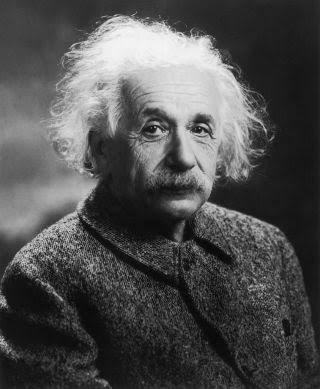Tesseract
Tesseract



More Posts from Astrorelations and Others

This is the Maiden of Llullaillaco, an Incredibly Well-Preserved Child Sacrifice from the Incan Empire around 500 years ago.
The Maiden of Llullaillaco, sacrificed at around the age of 15, was discovered with the other “Children of Llullaillaco” which includes a 6 year old girl and a 7 year old boy.
These mummies are so well preserved due to their position within a tomb atop a mountain within the extremely dry Atacama Desert. They are so well preserved, that their internal organs are intact, individual hairs on the arms can be seen and even one of the heart’s still contains frozen blood.
The deaths of the three children occurred by drugging the children with alcohol and coca, then placing them in the tomb where they eventually died in their sleep. This appears to have been a very well prepared process, as hair samples dictated that the children had extremely rich diets leading up to their deaths. The tombs were also adorned with elaborate dress and trinkets.
The boy however, faced a different death that could’ve indicated struggle or a different burial process. The boy was very tightly bound, and had dislocated hips and ribs and it appears he died under stress as the clothing contains both vomit and blood. Suffocation is the likely cause of his death due to the way he was bound.
Energy formulas for imaginary matter
An imaginary matter is the mirror image of the corresponding real matter.
Energy formulas for real matters are still useful for imaginary matters if an observer is in the imaginary space. Then how are energy formulas for imaginary matters expressed if an observer who is in the real space could observe imaginary matters?
Suppose that observer A is in the real space and observer B is the mirror image of observer A in the imaginary space.
The space velocity vector and spacetime velocity vector measured by observer A are the opposite of those measured by observer B in the same way that the left and right sides of the mirror image are swapped, i.e., the space speed measured by observer A is constant at the maximum speed c and the spacetime speed measured by observer A is variable.
The relationship of these velocity vectors are shown in the figure below.

Assuming an imaginary matter moves at speed vi measured by observer B, the space speed vsB, time speed vtB and spacetime speed vstB measured by observer B are as follows:

On the other hand, the space speed vsA, time speed vtA and spacetime speed vstA measured by observer A are as follows:

The following equation holds true for time speed.

Hence, the following formula is obtained for the spacetime speed measured by observer A.

The spacetime speed measured by observer A is smaller as the space speed measured by observer B is larger.
Real matters cannot move at the speed of light at the cost of having mass, while imaginary matters also have mass but move at the speed of light.
Mass energy vector is in the time axis of the space-time complex plain and the time axis is common between the real space and imaginary space. Hence, the magnitude of mass energy vector is invariant for the spatial inversion. The imaginary space axis is at right angles to the real space axis in the space-space complex plain.

Therefore, the mass energy of imaginary matter measured by observer A is expressed as follows:

where “−i” is the operator that transfers from the real space to the imaginary space and m is mass.
The energy formulas for real matters in the range of v>c express those for imaginary matters, but the energy formulas of total energy and momentum energy are exchanged for each other. Therefore, the momentum energy Es and total energy Est of imaginary matter measured by observer A are expressed as follows:

For an imaginary matter at rest (vi = 0),

The space speed of imaginary matters is always zero because they have no momentum energy. Hence, an imaginary matter is equivalent to the real matter with (square root of 2) times the mass of the imaginary matter, moving at the speed of light.
The space velocity and time velocity of real matter, light and vacuum energy and those of imaginary matter converted into the real space are arranged below.
・Real matter : relative space speed and relative time speed ・Light : absolute space speed and no time velocity ・Vacuum energy : neither space velocity nor time velocity ・Imaginary matter : absolute space speed and absolute time speed
What she says: I'm fine
What she means: How come Rene Descartes is only remembered as a philosopher, and the guy who said "I think therefore I am"? The Cartesian plane is NAMED after him and still only hard mathematicians know that he invented it. Also, the whole Newton/Leibniz argument completely ignores the fact that Descartes allowed both of them to discover calculus, because of his theories/ideas and invaluable work with exponents - he literally laid the foundations of calculus but no one mentions him when discussing who invented it. He even invented the modern notation of writing powers as superscripts as well as the convention of using x,y,z for variables and a,b,c for constants. Most importantly he INVENTED ANALYTIC GEOMETRY and pulled everyone's collective heads out of their collective asses. He was one of the greatest mathematicians. But yeah, a cool philosopher too, let's let "Cogito Ergo Sum" be his only legacy.
Albert Einstein:
“God does not play a dice with the universe.”
Niels Bohr:
“Stop telling God what to do with his dice.”
Stephen hawking:
“Not only does God play dice but...he sometimes throws them where they cannot be seen.”



I really want to get into math. What book do you recommend reading!
Great question! Here are some fun ones that are still informative and that really opened up my eyes to what math truly is:
How to Solve It by George Polya. This is a classic and the title speaks for itself: it is about how to reason mathematically.

Hyperspace by Michio Kaku. This one is mathy and sciencey. It is very geometrical and shows how our view of geometry has changed throughout history and how it has influenced science. Kaku is my favorite author.

Proof and Refutations by Imre Lakatos. Another classic. This one has to do with how mathematical proof advances our mathematical knowledge, in other words what professional mathematicians do. It is also surprisingly funny.

Other recommendations?
Eh?




Tesserac t Visio n





Blanet: A new class of planet that could form around black holes
The dust clouds around supermassive black holes are the perfect breeding ground for an exotic new type of planet.
Blanets are fundamentally similar to planets; they have enough mass to be rounded by their own gravity, but are not massive enough to start thermonuclear fusion, just like planets that orbit stars. In 2019, a team of astronomers and exoplanetologists showed that there is a safe zone around a supermassive black hole that could harbor thousands of blanets in orbit around it.
The generally agreed theory of planet formation is that it occurs in the protoplanetary disk of gas and dust around young stars. When dust particles collide, they stick together to form larger clumps that sweep up more dust as they orbit the star. Eventually, these clumps grow large enough to become planets.
A similar process should occur around supermassive black holes. These are surrounded by huge clouds of dust and gas that bear some similarities to the protoplanetary disks around young stars. As the cloud orbits the black hole, dust particles should collide and stick together forming larger clumps that eventually become blanets.
The scale of this process is vast compared to conventional planet formation. Supermassive black holes are huge, at least a hundred thousand times the mass of our Sun. But ice particles can only form where it is cool enough for volatile compounds to condense.
This turns out to be around 100 trillion kilometers from the black hole itself, in an orbit that takes about a million years to complete. Birthdays on blanets would be few and far between!
An important limitation is the relative velocity of the dust particles in the cloud. Slow moving particles can collide and stick together, but fast-moving ones would constantly break apart in high-speed collisions. Wada and co calculated that this critical velocity must be less than about 80 meters per second.
source

